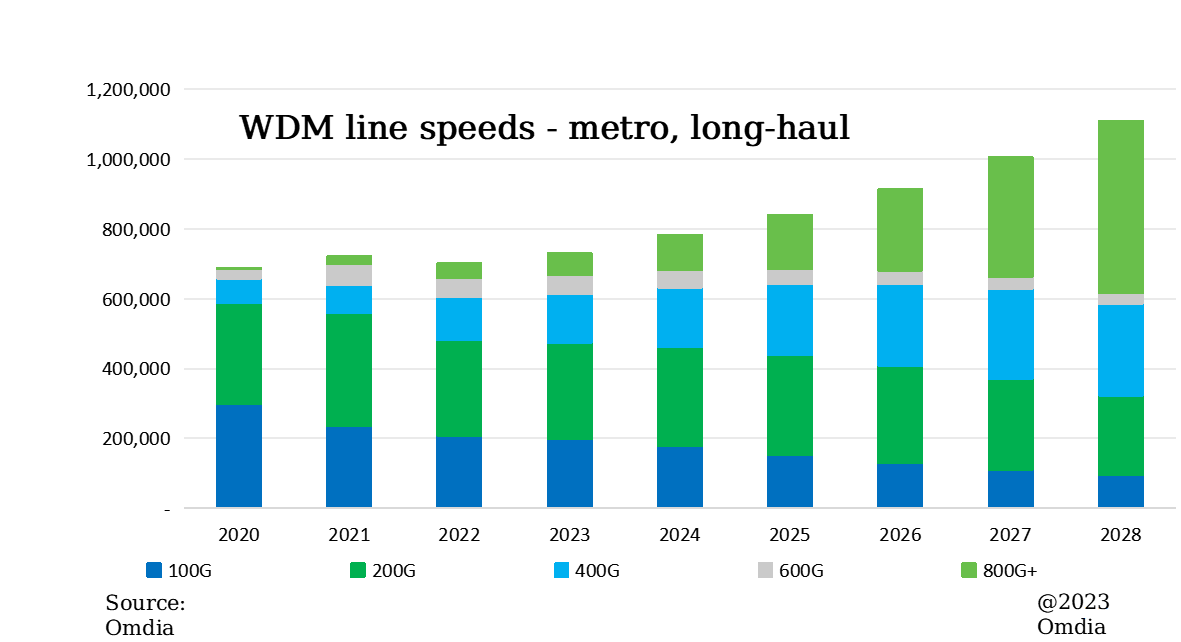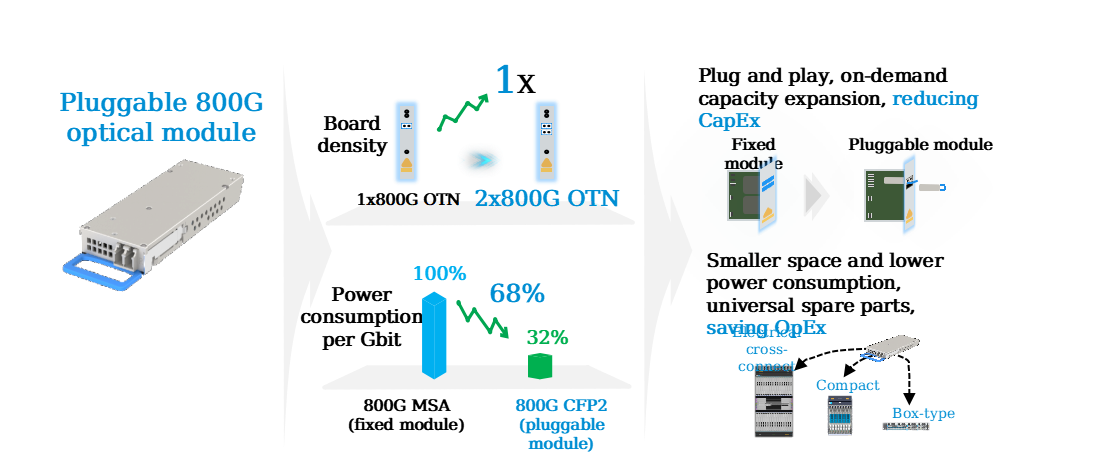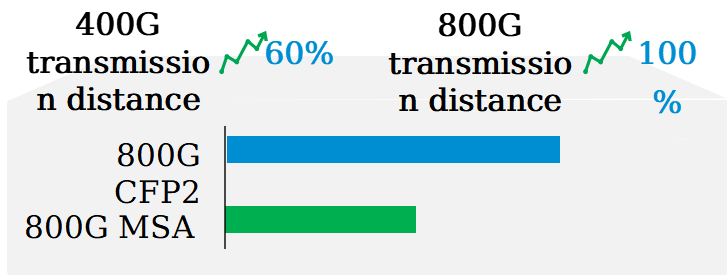ZTE embraces new strength of green and efficient optical networks for flexible choice in Tbit era
800G+ coherent optical interfaces boost large-scale commercial deployment of 400G/800G OTN networks to deal with rapid traffic growth
In the digital era, with the wide application of cloud computing, big data and AI technologies, data traffic has been increasing exponentially, posing higher requirements for network bandwidth. To cope with the rapid growth of traffic, the port rate of OTN transmission networks has been continuously upgraded: from the commercial use of 100G in 2012 to the large-scale deployment of 200G WDM in 2016, and then to the emergence of 400G WDM in 2020, the surging service traffic drives the update and iteration of the transmission rate. At present, operators gradually begin to have the demands for 800G OTN. 800G and above high-speed OTN networks can provide larger bandwidths to meet the rapid growth of traffic, reduce transmission costs, and improve network operation efficiency. It is estimated that the growth of 800G+ coherent optical lines (which may operate at a lower rate of 400G/800G in commercial deployment) will accelerate after 2025, at a compound annual growth rate of 49.9% in 2022-2028. So far, a certain number of 800G+ ports have been shipped. It is predicted that the shipments of 800G+ ports will exceed that of 200G ports in 2027, and 800G+ will become the mainstream system rate.

With four prominent features, ZTE solution helps build flexible, green and efficient OTN networks
At present, 800G has only been put in commercial use at a small scale, and is mainly used in DCI and metro short-distance transmission scenarios. With the development of the industry and the maturity of the industrial chain, it is expected that 800G will enter an outbreak period in 2025, and gradually cover metro and backbone scenarios. ZTE has launched the industry's first pluggable 800G OTN solution with lower power consumption, which can help operators reduce the cost and power consumption per Gbit and build greener and more efficient network infrastructure. In December 2023, ZTE completed the verification of the world's first computing power interconnection solution based on 800G 16QAM pluggable module on the existing network in China. In February 2024, ZTE completed a successful verification of the longest terrestrial long-haul transmission over 2000km based on commercial 800G pluggable coherent modules and single carrier architecture without regeneration in collaboration with Turkcell.
ZTE's pluggable 800G OTN solution have four major advantages: ultra flexibility, high performance, large capacity and all scenarios.
Ultra flexibility: The pluggable module has obvious advantages compared with a fixed module. First, the pluggable module has a smaller size. With only 50% the size of a fixed module, it can reduce space occupation and increase the board port density by 100%. Second, with the power consumption per Gbit being of 68% lower than that of a fixed module, the pluggable module can significantly reduce the system power consumption. Based on the plug-and-play feature, the pluggable optical module supports fast and on-demand capacity expansion, substantially reducing the CapEx for customers. With doubled board density and lower power consumption, it requires smaller equipment room space and reduces power consumption. It is applicable to all products and so requires fewer spare parts. These factors together help customers save a large number of OpEx.

High performance: ZTE's pluggable 800G solution is based on the 130GBd technology and highly improves the transmission performance compared with the 96GB-based fixed module. The transmission distance is improved by 60% at the rate of 400G and 100% at the rate of 800G.

Large capacity: Based on the pluggable 800G solution, ZTE launches the ZXONE 9700, the OTN platform with the industry's largest cross-connect capacity, and the ZXONE 7000, the box-type OTN platform platform with the industry's largest capacity. The ZXONE 9700 supports an electrical cross-connect capacity of 1.6T (2x800G) per slot and 100T+ per subrack. The ZXONE 7000 supports a single-slot capacity of 1.6T (2x800G), and the maximum capacity of a 2U subrack is up to 12.8T. In terms of single-wavelength rate, ZTE has rich practice cases of 1.2T, and continues to explore the higher rate of 1.6T. In terms of spectrum extension, ZTE has extended commercial spectrum to C+L-band to provide 12Thz spectrum resources, and continues to extend to S+C+L-band. So far, ZTE has completed the Tbit-level real-time transmission system test based on S+C+L-band with a total of 17Thz spectrum resources, and achieved a maximum lab single-fiber capacity of 136T. In the future, ZTE will continue to explore larger-capacity OTN transmission systems.

All scenarios: ZTE's full series of OTN product solutions based on the pluggable 800G optical module cover all scenarios including backbone, metro, and DCI. In backbone scenarios, the 130Gbd-based single-wavelength 400G QPSK modulation solution can be used to achieve the longest transmission distance. In metro scenarios, the 400G solution with the channel spacing of 75Ghz/100Ghz or the 800G solution with the channel spacing of 150Ghz can be selected according to the transmission distance to achieve the best balance between the transmission distance and capacity. In DCI scenarios, the 130Gbd-based single-wavelength 800G 16QAM modulation solution can be used to achieve the largest system capacity.

ZTE will offer new strength to OTN networks in the Tbit era
With the continuous progress of technologies and the continuous growth of application demands, 800G+ coherent optical interfaces have great application prospects. ZTE has launched the industry's first pluggable 800G OTN solution to help customers build green and efficient OTN networks. In the future, OTN networks with a maximum single-wavelength rate of 1.6T or even 2.4T will become possible, further expanding the system capacity of optical networks and the transmission distance of 800G OTN in commercial deployment. ZTE will continue exploring and innovating to promote the progress of 800G+ OTN and expand its application scope, and offering new strength to flexible, green, and efficient OTN networks in the Tbit era.



